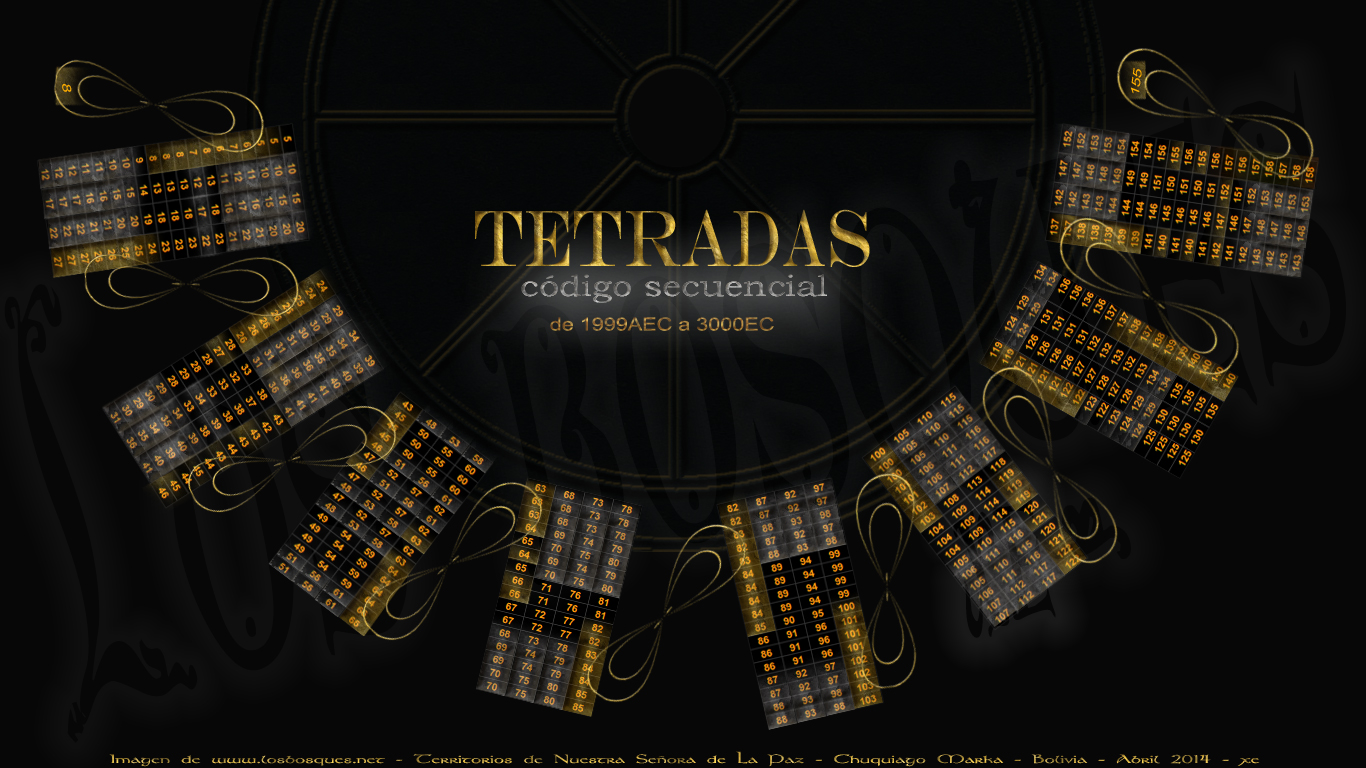Search for Cyclic Patterns
- At Los Bosques I also search for eclipse cyclic patterns in history
- Lunar and solar Saros families they belong to are taken into account
- The inauguration year of each Saros family as determinant for the whole period
- Return years for each eclipse (every 18 years)
- Cyclic examples in history can be seen in: Eclipses and Patterns
15 April Eclipse and Tetrad
- This April 15 starts the first eclipse of a tetrad series for 2014 and 2015
- This tetrad is the 7th serie of Period 7 with a duration of 574 years. See Tetrads by Periods
- More information on this eclipse plus other three in Eclipses 2014
Another Search
- Once again, I started another search for cyclic patterns in tetrads
- The first thing I found is that tetrads belong to a major cycle
- Cycle well over the 5000 years of public accesible information. See Tetrads by Periods
Underlying Code
- Therefore, Tetrads by Periods probably show only a portion of a major cycle
- However, even though it’s just a ‘portion’, it’s possible to make visible an underlying code
- The code is defined by sequential connections with different patterns
- How these patterns behave in history was not searched yet
The following image shows the most important connections. Further down, data on basic information and sequences found.

Tetrads and Eclipses
- Tetrads occur only with lunar total eclipses
- Each tetrad has 4 consecutive lunar total eclipses
- The tetrad unfolds in 2 years and 2 eclipses per year
- From 1999BCE to 3000CE there are 3479 lunar total eclipses
- Only 568 of them are tetrads (16,3%)
- In those 5000 years there are 142 tetrads
- Source: “Eclipse Predictions by Fred Espenak (NASA’s GSCF)”
Tetrads and Saros
- The 8 periods of tetrads are ordered sequentially
- All lunar Saros for each tetrad were included
- Each period of tetrads reaches an average of 565 years
- In a period there are 2 phases: first without tetrads, 2nd with tetrads
- The average of tetrads by period is approximately 17
- The number of Saros lunar families of each period ranges from 21 to 23
- The 4 eclipses of each tetrad belong to a different lunar Saros
Sequential Code
- The 4 Saros of each tetrad as a series and repeating its order, act from 1 to 4 times maximum in the same period
- An eclipse from the same Saros can act 1 to 5 times maximum and in different order in the sam e period
- Eclipses from the same Saros and the same period act only in two sequential orders: 1-2, 2-3, o, 3-4
- A Saros eclipse can act in 2 periods of tetrads but always following a sequential order
- Sequences or repetions of any type in the priod are only > 1 and < 5
- There are three sequential connections that differentiate the ‘function’ of Saros on each period:
-
- Those that keep the sequential order of the eclipse in the tetrad: 1st, 2nd, 3rd or 4th (copper in the image), and occur on the same period
- Those that change the sequential order in the tetrad but remain in the same period (silver n the image)
- Those that connect only two periods of tetrads and activate only as fourth or first in the tetrad (gold in the image)
- The connection between periods also happens with Saros 8 and 155 that precede and follow respectively the 8 periods
- Tetrads activate only from 1 to 5 eclipses of each Saros family which has approximately 70 eclipses (less than 1%)
- In those 5000 years observed there are 153 lunar Saros families: from 5 to 158
- In these 8 periods of observed tetrads the 153 lunar Saros families are present
The underlying sequential code in the tetrads connects all the lunar Saros
families from 1999BCE to 3000CE through the total lunar eclipses
Then,
- If there are cyclic patterns linking together 5000 years in sequential stitches, probably there are cyclic patterns in the histories of the peoples waiting to be made visible
- If we carry a giant sequential code in the DNA still not fully understood, probably there are major cycles with sequential codes that we are living and we do not see them yet
- If the enourmousness of sequential codes is well beyond the capacities of individual processing, probably diverse individual or group capacities can help make visible something of the infinite sequences coding us
- If someone wants additional information, please do not hesitate to contact me
- If you have or find related information or if you develop additional information, do illustrate us. Thank you.
Read also: